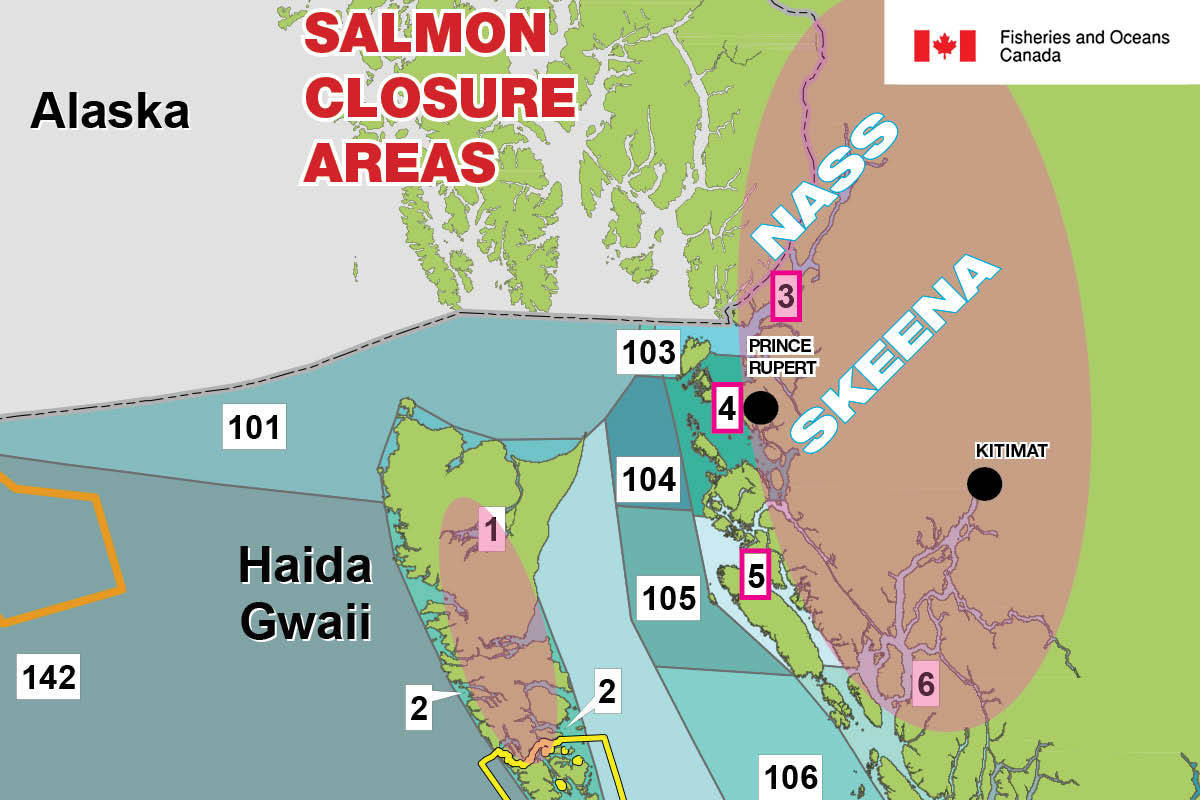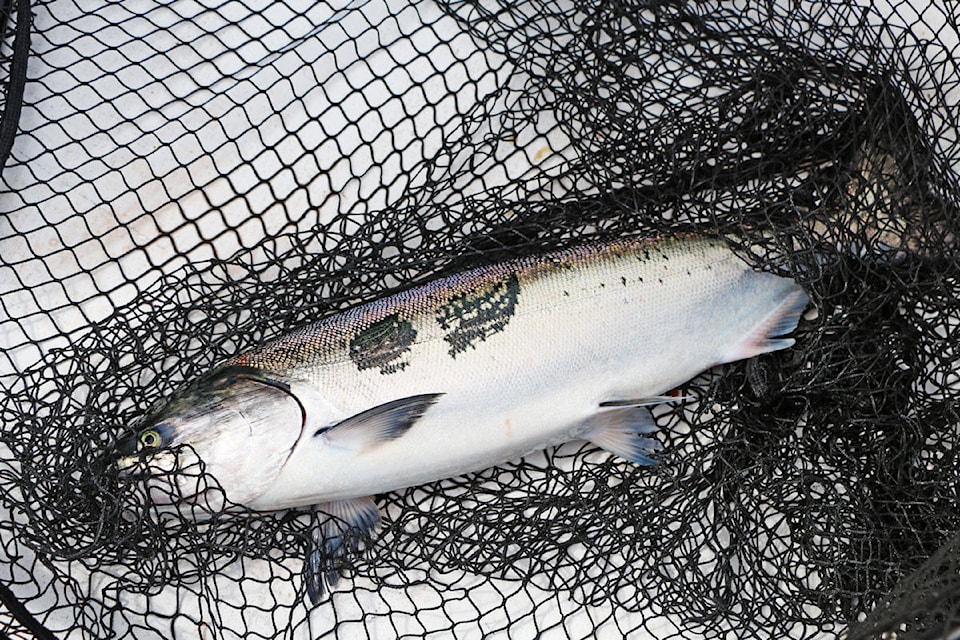Recreational fishing for all salmon — chinook, sockeye, pink, coho — on the Skeena and Nass rivers is forbidden until further notice, and an announcement on possible closures or restrictions for salmon in the marine areas is coming soon.
“Everybody is going to be sharing some pain here,” said Colin Masson, North Coast area director for Fisheries and Oceans Canada (DFO).
Stan Doll, owner of Skeena Wilderness Fishing Charters, called the decision “devastating” for local businesses. He said the closure last year cost his company about $100,000, while DFO’s late decision damaged the area’s reputation with future clients.
“Bookings are way down because of last year, and now with it closed again this year I can’t see us doing any business at all until probably August.
“The next couple months are going to be zero.”
Doll said he felt adequately consulted but he and other guides were pushing for a catch-and-release program rather than a complete closure.
With poor anticipated returns for chinook and sockeye, DFO has decided to provide “absolute clarity” by restricting sport fishing for all salmon.
“In the Skeena, it’s kind of a tiered approach in order to cover off different aspects of the recreational fishery. The first thing is there’s the chinook non-retention, but that’s overlaid with no chinook fishing. The difference there is if there’s no chinook fishing then it actually enables the enforcement of individuals who may go out chinook fishing and keep releasing chinook — because a number of those chinook would die,” Masson said.
This measurement won’t affect the catch and release of steelhead in the river, which is managed by the province. But, Masson warns if a fisheries officer spotted a steelhead fisherman who repeatedly caught chinook, they could be subject to some enforcement action as well.
While the closure announcement on May 8 was for the recreational salmon fishery, an announcement is expected in early June for commercial and recreational salmon fishing in the adjacent marine areas, Areas 3, 4, 5, off the mouth of the Skeena River up to Haida Gwaii.
READ MORE: Commercial sockeye fishery faces closure on North Coast
Doll has run his family charter business out of Terrace for 40 years, employing about eight people, offering both river charters in the Skeena watershed and marine charters out of Kitimat and Prince Rupert.
He’s now hoping his company can adapt to closures with more eco-tourism, normally a small side endeavour now pushed to the front line with additional costs for advertising, a new website and brochures. Doll said it’s vital for his company to take this route because his fishing-charter expenses have to be covered whether or not the salmon are there to pay for it.
“We have to pay for our rod days whether we use them or not,” he said. “Our guides, if we don’t employ them, they’ll find jobs elsewhere and we can’t get them back. There’s insurance for all the boats. The costs just don’t go away.”
Impacts to First Nations food fish
When Deborah Parker saw the closure announcement online, she was worried about how she would go food fishing this summer. She lives in Kitsumkalum First Nation next to the Skeena River.
“My brother phoned me the following morning and informed me that it would be best I get a fishing licence to do rod fishing on the Skeena,” she said, to keep a record of the two fish she may catch for food, social and ceremonial purposes. Her brother, Jim Webb, works as a fish and wildlife guardian officer for Kitsumkalum.
Webb said that catch numbers are low through rod fishing, adding “we have a self-imposed moratorium for net fishing on the Kalum River due to low socks.”
Last year, with low sockeye returns, the community held off from food fishing until there was one week when community members were allowed to go out. This year, Parker expects it to be the same.
“We’re going to follow what the fisheries department says. If we have it open for a week, we have some members go out and fish and distribute it out for those who can’t get out to fish, and to distribute to our elders as well,” Parker said.
DFO has met with advisory groups and the First Nations Technical Committee to discuss options for this year and fine-tune a decision for June.
“Most First Nations that we’ve actually had direct bilateral discussions with have indicated that while there may be some harvesting for food purposes, they’re not intending to target chinook unnecessarily when we’re trying to meet our conservation objectives,” Masson said.
Protecting small business in the north
In March, DFO issued an early warning of potential closures to address criticism from the previous year that the federal agency didn’t give enough notice to people who rely on fishing for their livelihoods.
With the anticipated return of 645,000 sockeye, Masson doesn’t expect any recreational or commercial fishing for sockeye salmon in the Skeena River — the return would have to be over a million. The commercial gillnet fishery has already been notified that there would be no targeted fishing for chinook in the Skeena.
Skeena Bulkley Valley MP, Nathan Cullen, is speaking with people with a stake in sport and commercial fishing industry to better understand the impacts.
“When the lobster fishery and the cod fishery went down (on the East Coast) and entire communities were impacted, that was just commercial fishing. This is both commercial and sports fishing communities that will be affected, so that’s all of the hotels, restaurants and stores that rely on those tourists. We’re going to compare the compensation packages and support packages that were prepared for the East Coast,” Cullen said over the phone on May 9.
Certain sacrifice is required in the hope of restoring stocks, Cullen said. He’ll be speaking with the Minister of Fisheries and Oceans, Dominic LeBlanc, in the coming days to learn more about the recovery plan moving forward so these types of closures aren’t necessary every year.
READ MORE: DFO contemplating sweeping North Coast salmon fishery closure
With files from Keili Bartlett
shannon.lough@thenorthernview.com
Like us on Facebook and follow us on Twitter

